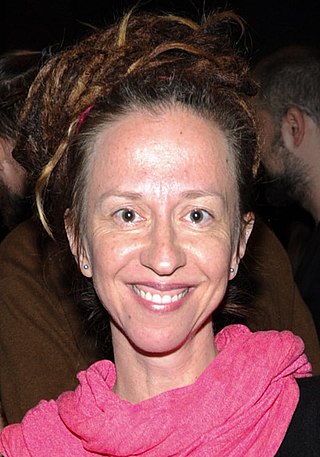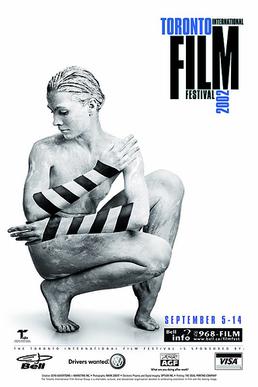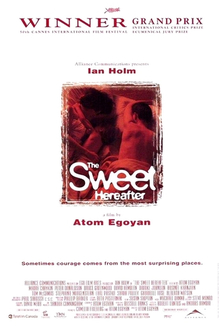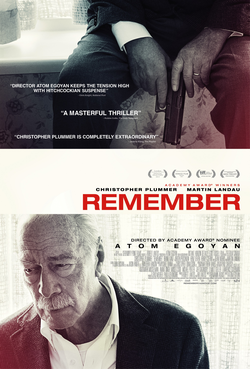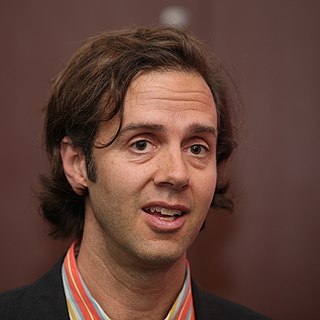Career
Scissere
Mettler's transformative experience at the heroin rehabilitation home provided the inspiration for his first feature Scissere (1982), "a narrative film that feels like an experimental piece, a collage of micro-tales of schizophrenia, addiction, study, and solitude", [3] which he dedicated to Bruno Sciessere, one of the facility's patients. Scissere was the first student film included in the Toronto International Film Festival (formerly known as the Festival of Festivals), and received the Norman McLaren Award for Best Canadian Student Film. [4]
Eastern Avenue
Mettler followed Scissere with Eastern Avenue (1985), an intuitive travelogue diary: a form that would become a hallmark of his filmmaking style. With stops in Switzerland, Germany and Portugal, "the film presents a freely flowing series of impulsive, impressionistic images: urban and rural, artificial and natural". [5] Throughout the 1980s, in addition to working on his own personal projects, Mettler would also collaborate as a cinematographer on several key films in the Toronto New Wave cinema, such as Atom Egoyan's early features Next of Kin (1984) and Family Viewing (1987).
The Top of His Head
Following Eastern Avenue, Mettler wrote and directed The Top of His Head (1989), a feature drama that follows a satellite salesman's "unexpected spiritual odyssey" [6] after meeting a radical performance artist. As with Mettler's subsequent films, The Top of His Head explores the nature of human perception and technology's ability to liberate and enslave experience through the power of recording media. "The images are dazzling", writes Bruce Kirkland. "Forced telephoto perspectives on industrial wastelands jar the eye. Extreme close-ups turn a drop of water into a micro-universe." [7] The film received three Genie Award nominations. Tectonic Plates
In 1992, Mettler adapted the stage play Tectonic Plates by Robert Lepage, in collaboration with Lepage and Theatre Repère. Rather than document a performance or adapt the stage narrative into screen drama, the film, shot on location in Venice, Scotland, and Montreal, "seeks to articulate cinematically the intersections of theatre and cinema, past and present, culture and nature, interior and exterior, representation and reality". [8] "The result", writes Vit Wagner in the Toronto Star , "is an intriguing and visually tantalizing collage that bridges the two media in a way that structurally underscores Lepage's themes of convergence, separation and transformation". [9] The play is a series of vignettes that draw inspiration from the movement of geologic tectonic plates. This metaphor expanded Mettler's associative approach to narrative, which would be developed further in his later documentaries Picture of Light (1994), Gambling, Gods and LSD (2002), and The End of Time (2012).
Picture of Light
Picture of Light (1994), Mettler's "meditative, at times profoundly beautiful non-fiction adventure film", [10] was made as a result of a chance meeting at a dinner party with the Swiss artist, collector and meteorologist Andreas Züst, who proposed that Mettler capture the aurora borealis on film. Mettler took up the challenge, braving arctic temperatures and constructing a special time-lapse camera system capable of operating in severe nighttime conditions during the film's photography in Churchill, Manitoba. A "beguiling and often breathtaking documentary about the meaning and mythology of the Northern Lights", [11] Picture of Light laid the foundations for Mettler's exploratory essay style, and was widely acclaimed, winning numerous awards. In 2017, the film was one of eight Canadian classics screened at the Toronto International Film Festival as part of its celebration of Canada's sesquicentennial. [12]
Balifilm, Krapp's Last Tape
Between Picture of Light and his next major project, the colossal Gambling, Gods and LSD , Mettler crafted the transfixing and elegant 28-minute Balifilm (1997). Weaving various images captured during travels in Indonesia with a soundtrack of Gamelan music, the film "may be the closest Mettler has come to a cinema of trance". [13]
Mettler and Atom Egoyan reunited once more as cinematographer and director, respectively, for an adaptation of Samuel Beckett's monodrama Krapp's Last Tape (2000), which starred John Hurt, as part of the Beckett on Film series.
Gambling, Gods and LSD
Gambling, Gods and LSD (2002), an epic project some ten years in the making, is a three-hour long meditation on transcendence shot across three continents in a dizzying array of locations, including Toronto's airport strip, where Toronto Airport Fellowship Church congregates dance and swoon at an evangelical service, Las Vegas, where crowds gather to witness a demolition, Zürich, where addicts speak of their marginal existence, and southern India, where Mettler's approach to street life and worship becomes more observational. The final cut was derived from a 55-hour long assembly of unique footage, which Mettler said was like "composing a piece of music". [14] "The finished film is long by conventional standards", wrote Cameron Bailey, "but it has the immersive feel of a great concert, or religious experience, or dream". [15] Gambling, Gods and LSD received a Genie Award for Best Documentary.
Image Mixing
After Gambling, Gods and LSD , Mettler became interested in developing an improvisational approach to cinematic montage within a live context. Using material from his own films, including countless hours of outtakes and an immense personal trove of diaristic video, alongside a virtually unlimited range of found footage sources, Mettler creates audiovisual mixes through live improvisation, often accompanied by an improvising musician, such as Fred Frith, or a DJ, such as Biosphere. Since 2005, Mettler has worked with the software company Derivative to develop an ever-evolving image-mixing software platform. Mettler regards the work of image-mixing as a way of processing material in an image-saturated culture: "you're taking images that are coming at you from the world and making them your own. You're possessing the things that are bombarding you all the time." [16] Mettler's image-mixing work has developed almost entirely in live, ephemeral contexts, but a "hallucinatory portal sequence" [17] in The End of Time (2012) gives viewers a hint of some of the ways in which this work manifests. Most recently, Mettler has toured across Europe performing Yoshtoyoshto, a live event fusing image, story, and music produced in collaboration with anthropologist Jeremy Narby and musician Franz Treichler. [18]
Manufactured Landscapes, Petropolis
Mettler served as cinematographer on Manufactured Landscapes (2006), director Jennifer Baichwal's documentary travelogue, essay film and portrait of Edward Burtynsky, the Canadian photographer famous for his large-format images of industrial landscapes and their impact on the environment and on human existence. Among the film's numerous international accolades was a Cinema Eye Honors Award nomination for Best Cinematography for Mettler.
Shot entirely from a helicopter, the Genie Award-nominated Petropolis: Aerial Perspectives on the Alberta Tar Sands (2009) found Mettler returning to a somewhat more experimental form, examining the titular subject, the world's largest industrial, capital and energy project, exclusively from a great distance and at a great height. Largely wordless, the film is at once bleak and wondrous, a study in both feats of industry and ecological malfeasance. "The object of the documentary isn't the vast domain of the oil sands, one visible from space and part of a post-terrestrial, post-human landscape", writes Georgiana Banita, "but something very human indeed, dependent on the viewers' ability to make sense, literally, of what they see on the surface of the earth, whose every mound and fracture the film painstakingly resisters". [19] Jerry White in Cinema Scope wrote: "Like Mettler’s previous epics of exploration Gambling, Gods and LSD and Picture of Light, Petropolis is a work animated by the powerful desire to discover the unknown, and [...] by an equally powerful humility before the formidable challenges that this unknown throws up against our senses and the technology that seeks to extend those senses." [20]
The End of Time, Broken Land
Mettler's 2012 film The End of Time drew upon the associative, essayistic techniques that defined both Picture of Light and Gambling, Gods and LSD as a means of exploring the elusive nature of time through science, art, history, anecdote and interview, and various ontologies and beliefs. Mettler visits numerous locales, such as CERN's Large Hadron Collider in Geneva, the site of the Detroit workshop where Henry Ford invented the Model-T, the home of a Hawaiian hermit untroubled by encroaching lava, and a Hindu funeral held near the alleged site of the Buddha's enlightenment. The End of Time , writes critic Adam Nayman, "exists in the twilight zone that is home to much of the best non-fiction filmmaking: at once rousing and sobering, baffling and precise, epic and intimate"." [21] The film's final stop is Mettler's childhood home, where he visits his mother, then in her eighties, to ask about her sense of time's passage. Time is there to enjoy everything you possibly can, she says. “Is that the right answer?” [22] Mettler closes the film on a note of ambiguity. "Like the scientists with whom and about whom he makes his films", writes scholar Jerry White in Of This Place and Elsewhere, "and like the philosophers who seem to be his constant companions, he is always open to the wonder of an unpredictable result". [23]
Following The End of Time, Mettler served as cinematographer on Broken Land (2014), a documentary about life and migration along the Mexico-U.S. border, co-directed by Stéphanie Barbey and Luc Peter.
Becoming Animal
Shot entirely in Wyoming's Grand Teton National Park, Becoming Animal (2018), co-directed by Mettler and Emma Davie, is a dialogue with, rather than an adaptation of, ecologist and philosopher David Abram's eponymous book. Weaving images of wildlife and places where wilderness intersects with tourist culture, along with commentaries from Abram, Mettler and Davie, Becoming Animal observes the sensory relay between man, animal and the natural world and considers what's at stake when we forfeit our connection to nature. "Cinematographically beautiful", Ellen Lande writes, it "offers insights and observations into the philosophy of modern man and how far away from nature we have placed ourselves". [24]





